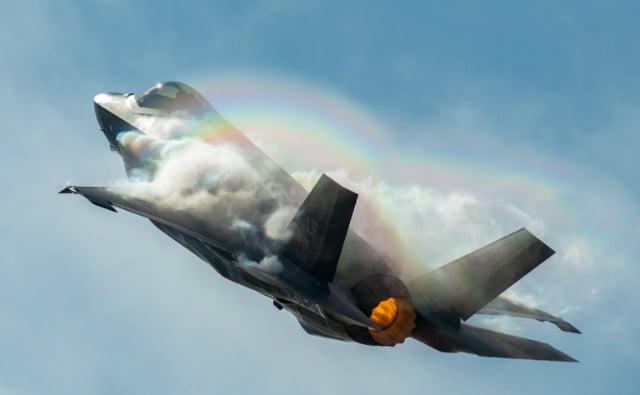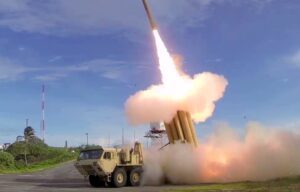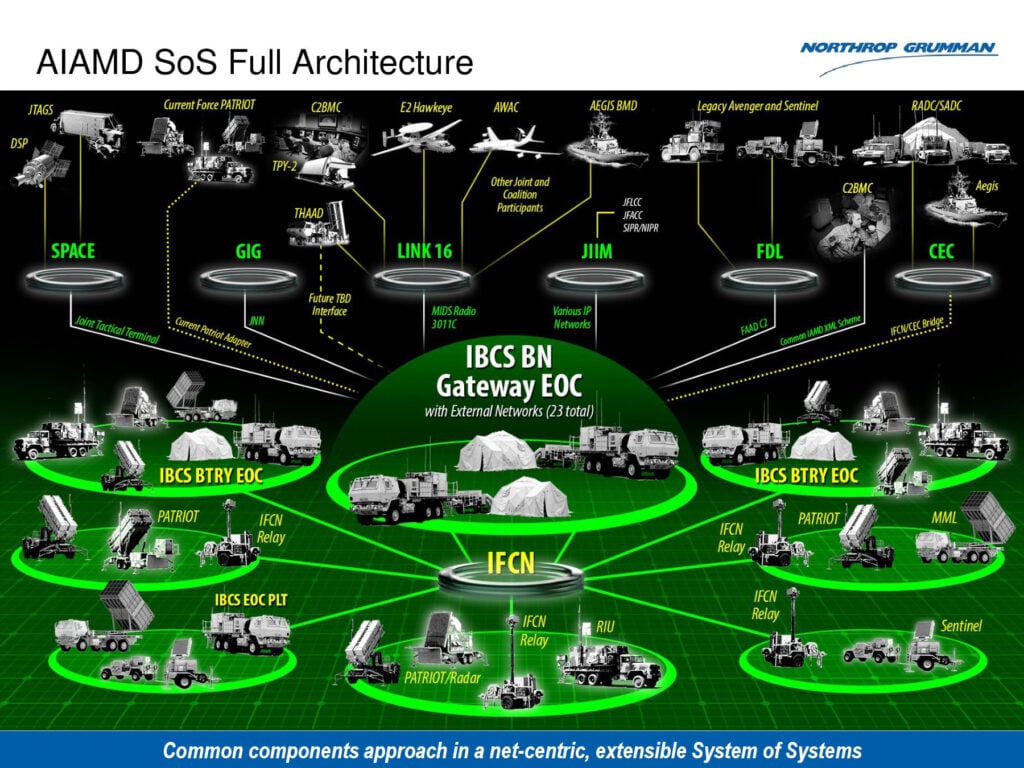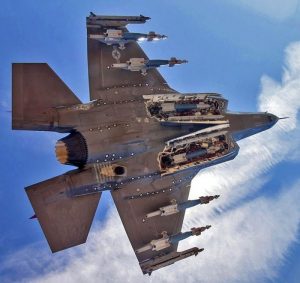
US Air Force F-35A
UPDATED with details on link WASHINGTON: An Air Force F-35 has transmitted live targeting data to the Army’s IBCS missile defense network on the ground, Lockheed Martin announced this afternoon. It’s an important step forward for two high tech programs that have come in for frequent criticism. It’s even more important for the wider interservice struggle to create a Multi-Domain Command & Control (MDC2) network that can share data rapidly among everything from fighters to satellites to foot soldiers to submarines.
The event took place as part of a regular Orange Flag exercise, which brings together aircraft — and now, it seems, ground forces — from the different military branches to test their interoperability as a joint team.

Army THAAD launch
While Lockheed’s F-35 Joint Strike Fighter was initially conceived of as a fighter-bomber, it’s become increasingly important in military planning as a high-tech scout. What joint commanders increasingly prize is the F-35’s ability to sneak into enemy airspace using stealth, spot enemy forces using its advanced radar and infrared sensors, take all the data it gathers, make some sense of it and relay all that data back to other aircraft with larger bombloads, warships, and even ground forces using hard-to-detect transmissions. (The technical term is LPI/LPD, “Low Probably of Intercept/Low Probably of Detection.”). The Missile Defense Agency is particularly interested in using F-35s to spot — and potentially shoot down — enemy missile launches. The Air Force Chief of Staff, Gen. David Goldfein, has called the F-35 “a computer that happens to fly” and sees it as a central node in the joint MDC2 network he’s determined to construct.
Likewise, IBCS, built by Northrop Grumman, was originally intended to connect different types of radars, missile launchers, and command posts within the Army. That internal connectivity is a high priority because the service currently has a panoply of not particularly compatible anti-aircraft and missile defense systems, from shoulder-launched Stingers to Patriot to THAAD. It wants each of them to be able to engage targets spotted by one of the others, rather than depend on its own radar. (IBCS is an awful nested acronym for Integrated Air & Missile Defense Battle Command System).

A simplified (yes, really) overview of the Army’s IBCS command-and-control network for air and missile defense.
But since IBCS began, Army leaders have committed the service to the concept of Multi-Domain Operations, which requires US and allied forces on land, sea, air space, and cyberspace — the five “domains” — to work together more closely and more quickly than ever before to take on advanced adversaries such as Russia and China. In a multi-domain fight, IBCS needs to connect to Air Force, Navy and Marine Corps sensors as well. (The F-35 is already compatible with the Navy’s Aegis). Not only does the Army want as many eyes looking for incoming missiles as possible. The other services’ high-flying jets, especially the F-35, can see distant threats that are hidden from ground-based radars by the curvature of the Earth.

F-35 with open weapons bay
This kind of connection is far from easy. Even once you convince two formerly incompatible computers to exchange data, you need a communications network that can transmit the data fast enough that it isn’t obsolete before it arrives, after all some missiles move at thousands of miles per hour and some can maneuver unpredictably. Finally you need a computer brain that can almost instantly compile data from multiple sources into a single coherent picture, instead of creating six images of a single missile because six different radars reported it in slightly different locations from different perspectives.
To make this work, IBCS is specifically designed as a plug-and-play open architecture that can, at least in theory, be infinitely extended by adding new sensors and weapons. But sensors and weapons designed before the Army standardized the IBCS interface, or developed by other services, require some kind of compatibility kit in order to connect to the network.
That may include the F-35, or at least its ground station, although it’s not clear how extensive any modification was. Lockheed said today only that the F-35 transmitted the data “via the F-35 ground station and F-35-IBCS adaptation kit, both developed by Lockheed Martin.”
UPDATE After some inquiries, we’ve figured out that the F-35 itself was not modified in any way — the capability to send this data out is a standard feature. The test also used the standard F-35 ground station — but running new software: This appears to have been the only update required to connect to IBCS. That said, it’s worth noting that the F-35 doesn’t seem to be linking to the Army network directly, but rather transmitting the data to its own ground station, which then transmits to IBCS. UPDATE ENDS
“The F-35, with its advanced sensors and connectivity, is able to gather and seamlessly share critical information,” Lockheed missiles & fire control VP Scott Arnold said in a statement. “This demonstration represents a significant growth in capability for the Army IAMD [Integrated Air & Missile Defense] program and … multi-domain operations.”
“This is another example of the power of IBCS’ open architecture design, which enables the integration of any sensor to any effector in any domain,” said Northrop Grumman VP Dan Verwiel. “Any sensor, any effector, any domain: This is the future of the US Army’s fight.”






















